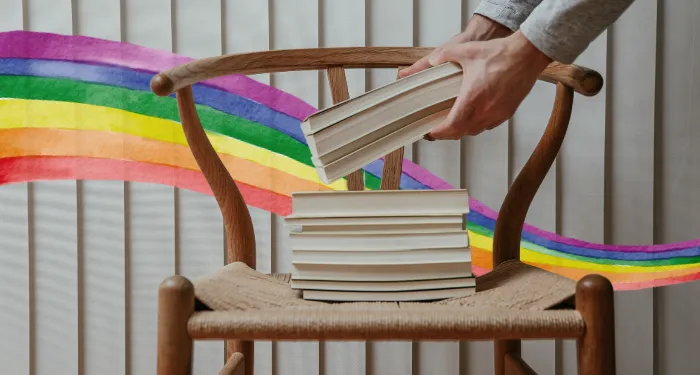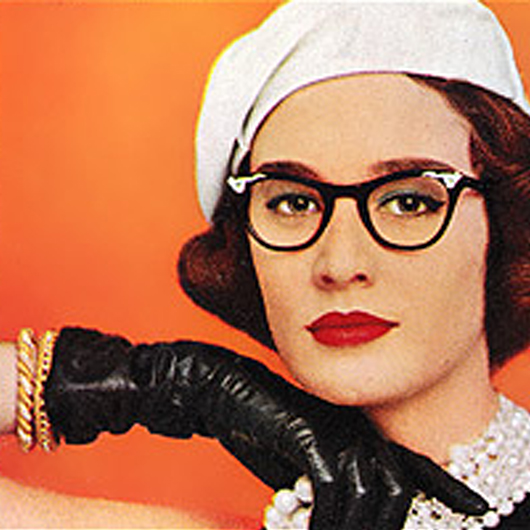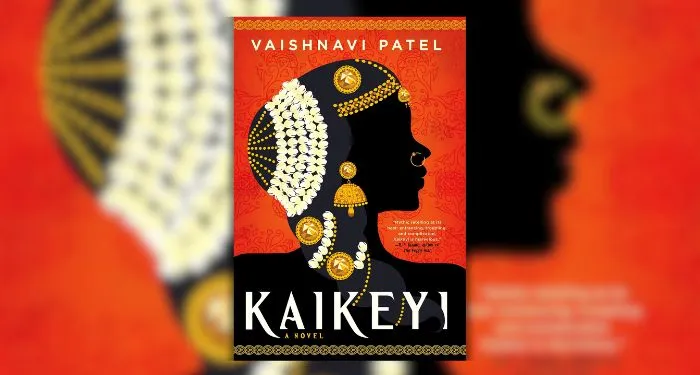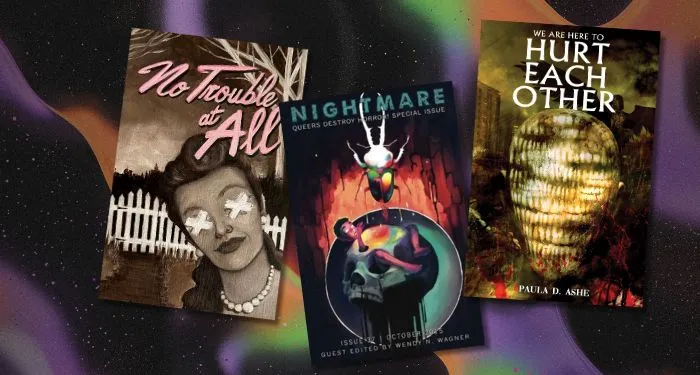About a third of the way through Kate Riley’s novel Ruth, its protagonist, Ruth Della Scholl, makes a friend. This is remarkable not because Ruth is a loner, though she is, or because she is damaged, though she may be that too, but because she lives in a closed religious community in Michigan. Before now, she hasn’t had a chance to make a friend outside it.
Ruth, in her late teens, is a terrible cook. It is around 1980, and the elders of the community have enrolled several young people, including her, at the local community college for training that will “better qualify them to serve.” Ruth’s culinary arts teacher, Chef Paul Ficarello, assigns her a partner named Kim Modelski. At first Ruth is intrigued by this “creature of extreme visual interest, decorated with swags of fabric and a tackle box worth of jewelry, but just a single modest pearl nestled in each earlobe.” She herself is wearing what she always wears, “a modest dress and head scarf.” As the other people in the class concentrate on their first task, drawing an “elegantly balanced supper” on butcher paper with a ballpoint pen, Ruth and Kim are struck by the absurdity of what they are creating: bowls of inky-blue tomato soup and scribbles of applesauce that Chef Paul thinks are servings of hair. Kim catches Ruth’s eye and smirks.
Kim’s smirk, a glorious mark of complicity and the spark of their friendship, is for Ruth also the sign of trouble ahead. This must be the “bondage of secrecy” she has been warned about, “the lightless Christless covenant in which sin flourished like fungi.” It is one of Ruth’s first tastes of intimacy, an experience the community has been built to withstand. “Most of Ruth’s reaction was to wonder,” the narrator comments, “whether Kim too might join the community.” But another possibility comes to the reader’s mind: Might this spark be what Ruth needs to imagine leaving it?
Riley’s novel follows Ruth from her birth in 1963 until the present. She is part of an Anabaptist group called the Brotherhood, whose members live in autonomous villages known as Dorfs. The Brotherhood’s belief that work is the best kind of worship means that everybody’s days are accounted for, from 6:00 AM onward: meals are cooked and eaten communally, possessions are rare, access to books and news from the outside world is limited, humility is expected of everyone and fertility in particular of women. More surprisingly childcare is shared, families are allotted a person to help during children’s infancy and often beyond, and warmth among blood relatives is squelched by assigning young adults to a family other than their own.
Outsiders rarely visit Edendale, the Dorf to which Ruth has recently been sent, in a “forced fledge,” to live and work within another family, but she invites Kim to come for a Saturday supper, something Ruth has never done before. Kim arrives with her boyfriend, Scott—a problem Ruth hopes to solve by telling the elders that she didn’t know Scott was coming, and planning to pretend to other members of the Brotherhood that he is Kim’s twin brother. Kim, for her part, is ruffled by the news that she can’t sit next to her boyfriend, though she calms down when she hears that the conversation at the men’s table will cover audio equipment and whittling. “Scott will be in heaven,” she tells Ruth.
Kim’s charm operates throughout the meal, as does Scott’s: “They were at home with one another, and in the world, and in hers; Ruth’s envy was so profound that the only safe thing to do with her face was yawn.” At the end of supper, Ruth thinks warmly of their next visit, and the next, and the next. Kim is thinking something different. As she leans in to say good-bye, Kim covers her mouth and whispers, “You’ve got to get out of here. You can stay with my family as long as you need.”
Ruth may well be living in the sort of MAHA paradise that Americans love to dream about right now, where yogurt is made from scratch, women treasure their floral dresses, and children play with newts rather than watch screens, but that didn’t stop me from thinking what Kim was thinking. Ruth has to leave! It’s not just that the rules of the Brotherhood will severely limit her life; it’s that she has the sort of mind that would enjoy the outside world. One evening, as a young girl, she watches the family dog, Kipper, making an “optimistic circuit around the table” and realizes, “Kipper thought he was a child…just as she thought she was a child. How could either of them ever be sure?” When dolls are banned and her mother, Esther, replaces Ruth’s with a square of terry cloth knotted in one corner, Ruth isn’t disturbed, “having read of changelings in the encyclopedia.” You sense how much she might enjoy Labubu toys and Taylor Swift’s engagement pictures, her imagination feasting on the gorgeous nothings of our world.
After Kim’s visit, Ruth spends Sunday in debate with herself about leaving, with each point of view assigned to a different person in her life. By Monday morning she has decided to stay and lose her first friend. She imagines having to tell Kim when she gets to class: “The mortification would be temporary, and surely preferable to a semester being pitied at such close range.” In fact mortification doesn’t come at all. Kim slides a note over to Ruth:
Dear Ruth,
I’m sorry for how Saturday night ended and I hope we can still be friends. Scott’s cousin joined the Moonies so I know it can be hard to leave (if you want to that is!!). I am always here to talk about it but if you don’t want to I understand.
PS what is Chef Paul doing?
Sincerely,
Kim
Ruth is delighted by the note—“the little footprints of the double exclamation points, the premature postscript.” It’s only then that she realizes that “all she wanted was a friend who knew she was suffering but would not make her talk about it.” And she didn’t need to leave the Brotherhood to find one.
Anabaptists like those in the Brotherhood believe that traditional baptism in ignorant infancy is pointless; baptism as an adult, after sinning and confessing, is the only meaningful initiation rite. The idea that someone born into a community might not join its faith—you can be “born a Catholic” but not an Anabaptist—is one of the sect’s originating ideas from the sixteenth century. But Ruth isn’t actually about a woman deciding to leave her extreme religious community. It’s about someone working out how to be herself while living in a society of strict rules, some of which are protective and some of which are crushing.
Riley’s novel stands in contrast to books like Miriam Toews’s Women Talking (2018), in which a group of women leave their Mennonite community, and memoirs like Tara Westover’s Educated (2018), which tells the story of its author leaving the Mormon family she was born into, and even movies like The Nun’s Story (1959), in which Audrey Hepburn as Sister Luke requests release from her vows. It is almost a convention in those kinds of stories: as we wait for the leaving, we revel in the dramatic irony, because we can see that the devotee has to leave, even if she doesn’t—until she does, to our satisfaction. But could there be drama in staying? Could there be interest in all the ways a community accommodates its doubters, and all the ways a doubter, knowing that others pity her situation, finds to stay?
One quality that helps Ruth stay is the quality we’ve already seen in her drawing of the bowl of blue tomato soup and her love of doubling up on punctuation. Riley’s narration makes clear that Ruth is wonderfully good at noticing the absurdities of the world and expressing them in language. In her early childhood there is “milk-burp air” in the Babyhouse, a perfect description of the sweet, gross gentleness of infancy, which, like air, is transient. When Ruth is charged with looking after a pet sheep for one of her brothers, a bad situation is revealed as funny because of the intertwined sounds, the repeating hard c and mild er, of the words Riley chooses: “Ruth could not summon James’s lamb, and even with pockets full of clover found herself the pursuer.”
Ruth’s logophilia seems to be inherited from her mother, who wanted to name her Maybelline Raisinette but was outmaneuvered by her husband, the steward of the community’s food stores. Ruth herself has no worldly context for the name she should have had, but the words prompt exotic imaginings: “Maybelline was likely a word to describe long hair—here a fantasied stallion tossed its head—and Raisinette an extinct form of credenza.” Esther, we learn, was “illiterate until seventeen” and “hoarded words and deployed the best only in times of great suffering, or boredom.” It is a survival technique passed from mother to daughter, like her advice to bake wifely anger into a pie: enjoy your words; they might be all you’ll have.
On her thorough exploration of the community’s rather minimal library, young Ruth learns that the outside world is different from her own:
The discovery, age five, that some people did not live in communities with all goods in common—that in fact for most, home was a locked building full of private property—begat questions still begetting questions at age thirteen.
The use of “begat” is quintessentially Old Testament, and yet the sentence depicts the later concept of commoning—sharing vital resources among the community rather than owning them privately—which has become important to many ecological theorists on the left. Historical eras overlap in the sentence just as five-year-old Ruth overlaps with thirteen-year-old Ruth. Perhaps one of the reasons, for the book and its protagonist, that Ruth does not leave is found in the great energy of the sentences: Ruth can entertain herself more effectively than most when they’re stuck. The energy meant for leaving is redirected into staying. (Maybe it is also because, through the books of Leo Tolstoy and Simone Weil, she can access a version of the outside world whenever she likes.)
Despite the community’s extremism, toleration swims through Ruth, almost as a character of its own, bursting out in jokes and silences, becoming intelligent in its perceptions and judgments. When Ruth is in high school and beginning to think about her baptism, she is summoned by Gerda, the wife of the Servant—the Orwellian name for the community’s leader. Ruth’s mother has reported that a plate of freshly baked cookies arrived at their house with a note: “With love, from Daryl Stahl.” This is an intimacy that must be controlled. “You need to put Daryl out of your mind if you expect Christ to find any place there,” Gerda tells Ruth. “And not just for baptism. If Christ isn’t at the center of your life, you can’t even begin to think about membership or marriage here.”
But the note was written by Ruth herself. “I just thought it would be funny to pretend that Daryl—I don’t know. I’m not attracted to him though,” she tells Gerda. Perhaps it would be funny to someone outside the community, but to Gerda it is puzzling. She doesn’t say anything further, and the narrator fills us in: “Defiance and sin Gerda could punish; defiance and sin could be healed. She knew no balm for oddness.” Romances in the Dorf begin with a letter sent to the Servant for approval; any relationship taking shape outside that epistolary process must be captured and redirected. But to outlaw a joke about this process, impishly expressed in butter and sugar, would be ridiculous.
Ruth’s fondness for Daryl Stahl may not be real, but her feelings for Calvin Winslow—a trombone player who, after glancing at her during breakfast one morning, reveals that he, too, doubted Anna Karenina was a masterpiece—are. “The second time she caught his glance,” Riley writes, “she resolved to love him completely.” To coincide on an unorthodox opinion—well, that’s all one needs at sixteen. Whenever Calvin is serving the communal meal, “Ruth became an astronomer and a particle physicist…predicting his orbit as he served and willing him to obey her gravity.” But Calvin eventually proposes to a girl named Giddy. “We pray to God to answer our prayers, and He always answers,” Ruth is told by the Servant. “Sometimes the answer is no.” What does she do with God’s no?
Calvin’s wedding is Ruth’s first great disappointment—and not one she can turn away from, as one of the tasks of unmarried women in the community is to clean and stock the new couple’s house for their return from their honeymoon. Ruth cries at her laundry; she has a nightmare that her brother James had died at the age of seven. Yet she can still comment laconically on the wedding itself, which takes place between courses at breakfast, as “the wild promise of marital eternity buffered by pastries.” The one-liner is often her savior: pithiness, lightness, “brainy female despair,” as Ruth puts it later, when she is married to the calm Alan with three children of her own.
Perhaps I told that part too quickly—over the course of two paragraphs Ruth is virginal, then lustful, dejected, and finally married. But speed and brokenness, even abruptness, are part of Ruth. Riley, who grew up in New York City and studied at Yale but briefly lived in a community like the one in the novel, typed “micro-dispatches” on an iPod Touch and sent them to her writer friend Molly Young. Early excerpts appeared in n+1 and The Paris Review, and in 2022 Young edited and published them in a small book-length edition called Miriam.
As Miriam (which some say is derived from the Hebrew word for bitterness) became Ruth (from the Hebrew word for companion), the book retained that fragmented structure, with no section more extensive than a longish e-mail, sometimes with vertiginous leaps in time and subject between them, and each rich with neologistic phrasing. (One of my favorites, about clothes: “trying to grasp the eely virtue of modesty.” The image this brings to my mind, of a slippery brown eel against a crisply buttoned shirt, somehow captures the tenor of conversations about the length of my teenage skirts.) Though the novel was renamed—did Riley ever consider Maybelline Raisinette?—the form, which Riley has said was borrowed from Evan S. Connell’s Mrs. Bridge (1959), stayed.
We may have gotten so used to the fragmentary—from Maggie Nelson’s The Argonauts (2015) to Patricia Lockwood’s No One Is Talking About This (2021) to Sarah Manguso’s Liars (2024)—that we’ve forgotten what it’s good at. It is good at what Young and Riley use it for, which is to coax out a novel, especially a first novel, piece by piece. It is good at drawing attention to the sentences themselves, particularly if they are intricate. It is good at reserving a portion of the novel’s construction for the reader, because it leaves many gaps. As the form is so associated with the high modernists, it reminds the reader that we live in a world after God, and we must make sense of things ourselves. It can be a marker of an attempt to take up Woolf’s injunction in A Room of One’s Own to find new forms for female experience:
Women’s books should be shorter, more concentrated, than those of men, and framed so that they do not need long hours of steady and uninterrupted work. For interruptions there will always be.
Ruth has all these advantages: concentrated in its sentences, written in gulps.
But Ruth also suffers from what a fragmented novel is bad at. Consuming each truffled paragraph in slow delight, you realize you cannot read many in quick succession. It is all too beautiful, and you long for water, air, neutrality. “Ruth’s body shimmered with errors,” a paragraph begins:
Bobby pins slipped and hid in her nape, her forearms bore parallel grill marks, and her big toe poked a hole through the roof of every left shoe within weeks of wear. Like her mother she was knock-kneed. Her hairs came out if she brushed them.
I love the description of the teenage body spangling like a fish. Each of the sentences that follow are euphonious, despite the error-ridden-ness they describe. But at this point in the novel, though we know about Ruth’s awkwardness, the plot isn’t yet entirely in view. The book is surprisingly easy to put down, given the strength of its writing.
Similarly the book is busy with character portraits, but it is rare that the characters recur, rarer still that a character grows and changes alongside Ruth. Just as Calvin is married off in the wings, so Kim disappears when the Brotherhood withdraws Ruth from her culinary arts course after a single semester. Ruth’s mother largely disappears from the book around the same time. One could argue that characters coming and going keeps the reader’s attention on the Brotherhood and how it operates, but this is also one of the community’s most sinister aspects: the systematic way its rules work against human intimacy. There is a deep sense that you are not allowed to truly love other people, only God. It is unnerving to find the guiding principle of the Brotherhood knit into the book’s structure itself.
The oddness that was allowed Ruth as a young woman becomes less endearing with age. When her first two children are born, Ruth doesn’t argue when Alan gives them the names Jamie and Rose. “The alternatives were only differently boring,” she thinks. But the birth of their third and last child inspires her, and she proposes calling the baby Idea. She is still sweaty from labor when the name comes to her, but her reasoning is sound:
It would be unique in the community; it meant her favorite thing; it required only the slightest blunting of the mind to sound like it had been a little girl’s name all along. And it had occurred unbidden, despite bidding, like relief from hiccups and most angels.
Alan chooses Gretel instead, and no one complains, not even Ruth. Has toleration become exhaustion? The children gleam while their mother fades: “Ruth detached with ease; her life was one long, loud Velcro release from the world.” Someone does leave at the end of Ruth, though by then the reader knows enough to not even want that person to be Ruth. She has stayed, and it is for the next generation to work its way free.


















 English (US) ·
English (US) ·